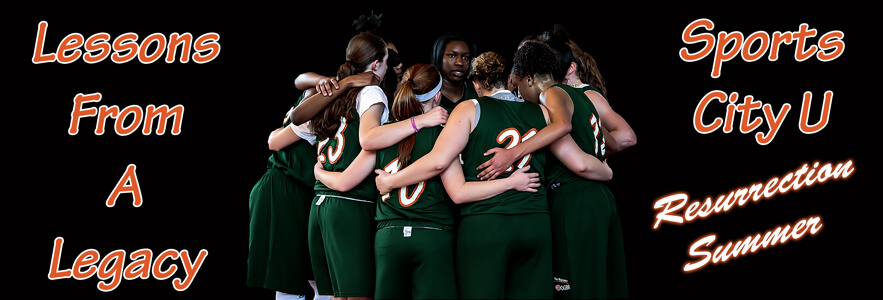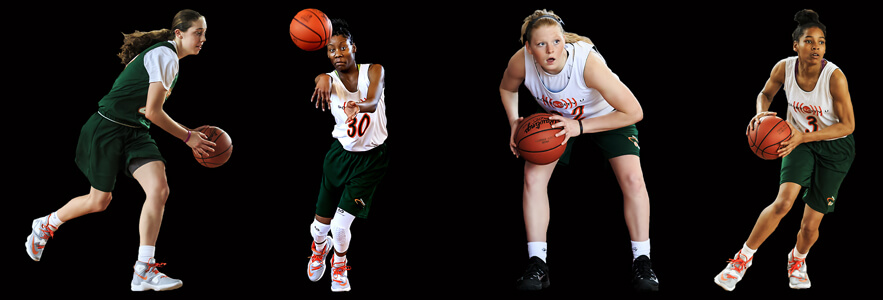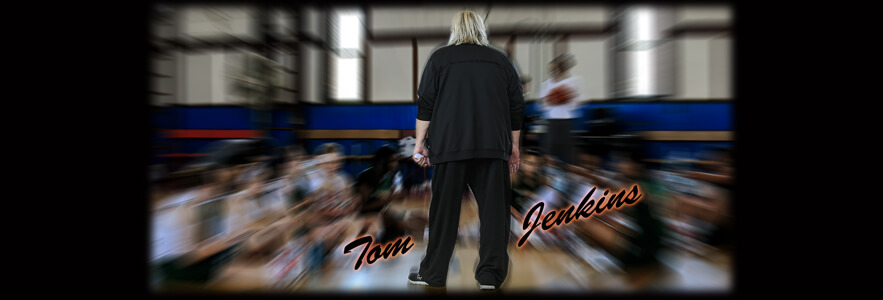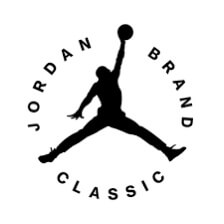
They say that imitation is the sincerest form of flattery. It can only be hoped that Tom Jenkins and Sports City U will spend the entire summer being flattered by not only their competition, but by any other club team interested in serving the best interests of their athletes. Let’s be clear, Jenkins doesn’t need adulation, applause or commendation. Far from it. It’s not what he’s all about and the track record for SCU speaks volumes all by itself.
Founded in 2009, every player on their roster through the summer of 2013 signed a Division I National Letter of Intent. During that time they also found a way to win 161 out of 180 games including a 43 – 0 record against all in-state teams from their rugged backyard of Ohio. Not that you’ll ever hear Tom Jenkins talk about winning. He holds that “winning is a byproduct” resulting from their commitment to distinct priorities and a system focused more on preparing their athletes rather than stockpiling wins and frequent flier miles.
Before we go any further, please understand that this isn’t intended to be a profile of Sports City U nor is it an effort to promote their program. That’s absolutely not what I do and they’re secure enough in who they are to not need any superficial fluff to stroke a fragile ego. What it is, however, is an effort to show some of the many lost and wayward clubs out on the circuit a proven road map to success. The frustrating lack of skill training, limited practice time and misguided commitment to games over growth continues to be an expanding impediment to player development every summer. I have hope that this will also serve as a blatant attempt to get vocal and disenchanted parents to aggressively hold their daughter’s club programs accountable for far, far more than their current return on investment.
Sports City U has returned to the gym this summer after a two year hiatus prompted by some uncertainty regarding NCAA legislative proposals and the increased demand of running a first class program on top of an already 60 hour work week. Jenkins “real job” is operating the highly regarded Ohio Girls Basketball Report, a single state scouting service considered the gold standard among its peers and college subscribers. Simply put, he needed a break.
So why the return now?
“I was approached by eight sets of parents and seven high school coaches who knew our philosophy, commitment and success in preparing players. They were looking for something more than their kids were currently receiving and asked if I would resurrect the program.”
As with any business negotiation it was a two way street.
“To do it we required a two year commitment from all of the players and in turn we’re giving them the same.”
The original genesis of the program back in 2009 resulted from a similar “dissatisfaction” among parents and coaches with their existing options. While there is no direct benefit for OGBR in the operation of the team, it is, however, instrumental in making it happen. No player pays to be a part of SCU and no individual has ever been asked or recruited to join the program. Their current March to July 2016 schedule is funded through former players and parents, business associates of Jenkins and ultimately OGBR itself. The fully funded program “eliminates any sense of entitlement from the start.” Take one look around the gym at any club tournament and it’s easy to see the critical value in creating that kind of environment to help eliminate the all too common ego driven speed bumps emanating from the bleachers and the far end of the bench.
There’s no need to promote the current Sports City roster. That’s not what this is about and furthermore, if you don’t already know their players you haven’t been paying attention to your recruiting in the Buckeye State anyway. Suffice it to say, they’re athletes capable of playing at the highest level. Just like the former Sports City point guard starting in this year’s final four or the multiple SCU athletes dotting the rosters of four other top ten teams in the final 2016 Division I polls.

When asked about what sets them apart, Jenkins comes back quickly to tell you what their approach is “not” about.
“It’s not about the money. It’s not about exposure and it’s not about winning”.
“It is, however, about a greater commitment to organization and planning than basketball. That being said, every decision on the floor is done based on objective rather than subjective criteria.”
Jenkins goes on to emphasize that everything they do stems from five priorities that are never compromised.
- Provide a structured environment that accurately parallels an NCAA Division-I setting
- Require maximum effort – A willingness to respond to demands and to ask the body to do something it has never done before.
- Teach all three ways to compete – a. Against self b. Against teammates c. With teammates
- Differentiate the difference between being a member of a team versus just being “on” a team
- Create lifelong memories
Sports City U is not a one man show. The scope of what they do wouldn’t be possible nor would it go hand in hand with the commitment made to their principals. Jenkins himself brings a coaching background from both the high school and college level while surrounding the players with a wealth of basketball experience. Jerry Hester returns as coach bringing a Division I head coaching résumé from both the women’s and men’s side. NBA veteran Larry Sykes, Academic All-American Kim Lancaster and Division I veteran’s Tenisha Benson and Nicole Bell are all instrumental in the SCU model on and off the floor. All are committed and present for every practice…and all are volunteers.
A true shame in NCAA legislation is the very limited ability of college recruiters to attend club practices. Watching Sports City U workout reminds true “teachers” of the game that the gym can still be a classroom. The breakdown and teaching of skills and drills is harder and harder to find on any level of play these days. With SCU the pace and the standards are not compromised plus they’ll stick with it until they “get it right” as evidenced by the 45 minutes spent on the first simple timed lay-up drill of the initial practice of this club season. Nothing is learned when you just “move on to what’s next” without meeting goals.
One aspect that has set Sports City apart in the past has been the advanced preparation prior to ever taking the floor for a game. Through the years they’ve gathered for three or four separate weekends with a defined and intricate schedule of practice and teaching that left no stone unturned. This year’s squad opened their efforts by attending the Final Four in Indianapolis. While there they got in their first six hours of practice while also attending the Sunday semifinal games and absorbing the atmosphere surrounding the best in college basketball. They then turned around the following weekend and logged 16 more hours of court time as a start in getting ready for the schedule in front of them.
That schedule is also part of the philosophy. You won’t see Sports City U tipping off every weekend of the spring and summer. When all is said and done they’ll play 30 or less games. Jenkins has turned down overtures from shoe company support in the past to maintain control of when and where they take the floor. He’s still sticking to his guns with a carefully calculated slate between now and the end of July. When you consider the limited days that D-I coaches can attend non-scholastic events between March and August his point is hard to argue. Jenkins looks for competitive and organized events. He has a commitment to a “parent friendly” component in travel as well as the quality of facilities being utilized. National level competition and the evaluation / media elements that come with that elite tier are also given consideration before committing to an event.
While some club teams are loosely organized settings, virtually nothing is left to chance with Sports City players. A meticulously detailed and complete itinerary is provided for every practice or tournament weekend in advance eliminating any decisions “on the fly”. As representatives of the team, coaches and Sports City U, player’s social media posts are monitored by a staff member. There are rules and guidelines regulating everything from cell phone use to jewelry and tattoos. Team communication is governed by a required response within 12 hours to any coach or teammate who may have reached out. Lesson one is that success now, and at the next level, comes with a cost. The cover of their ever present notebooks boldly states “Paying the price to occupy the space” as a constant reminder. Coaches from two current top five college programs told Jenkins recently that their Sports City signees have been “the best prepared players we’ve ever had.”
Before you begin to think things are dictatorial with SCU you need to know that the players have input where players want it most…on the floor. They control who starts each game. They control the minutes that they play and the shots that they can take. All are determined through conditioning tests, two point shot testing, three point shot testing, and a productivity chart (Five highest grades from the previous game start the next). There are three defined, non-negotiable “hooks” that will get you a nice comfortable seat on the bench. Giving up an offensive rebound and committing a turnover in the backcourt are the first two since, as Jenkins puts it, “it’s not our job to help our opponent score.” The third hook is reacting to an official’s call. Jenkins will willingly sacrifice a win for a teaching moment and has only dropped one game over the years as a result of that commitment. That single loss came on the heels of a reaction to a whistle and a key player benched down the stretch of a close game.
That emphasis on “teaching moments over wins” came into play in their first game this spring. While not a “felony”, a team rule was broken by an impact player resulting in an opportunity to view the action rather than be part of it. The result? SCU’s first ever loss to another in-state program. In their two tournaments thus far, they haven’t lost a game since and most recently claimed top honors in USJN’s prestigious Windy City Classic. Point made.

Jenkins elaborated that “In a distorted way, that loss is exactly what we’re all about and separates us from the crowd.”
Jenkins also sees a bigger picture than just his own team in front of him and understands that, off the floor, clubs are all fighting the same battles.
“I’ll sit down with anyone who wants to come to Berlin (Ohio) and spend as much time as they want talking about what we do and how we do it. To this point, only two individuals have ever taken me up on that offer.”
Hopefully this structural profile will be taken as it’s intended. It’s time to expect much, much more from club programs and coaches. It’s not a coincidence that the transfer rates at the collegiate level are so high when recruiters have to follow a prospect from club to club to club over the preceding summers on their never ending attempt to find a better setting. Jenkins’s way isn’t gospel nor is it the only approach, but it sure seems like an example worth taking note of. Somewhere along the line recruits have to be prepared for the next level. We’ve got too many programs simply satisfied with getting players “out there” rather than getting them “ready”. Sports City is back and is providing evidence that it’s possible to do both.
Mark Lewis is a national evaluator and photographer for Blue Star Basketball as well as the lead columnist for Blue Star Media. Twice ranked as one of the top 25 Division I assistant coaches in the game by the Women's Basketball Coaches Association (WBCA), he logged 25 years of college coaching experience at Memphis State, Cincinnati, Arizona State, Western Kentucky and Washington State. Lewis serves as a member of the prestigious McDonald’s All-American selection committee as well as the Naismith College Player and Coach of the Year committees.





